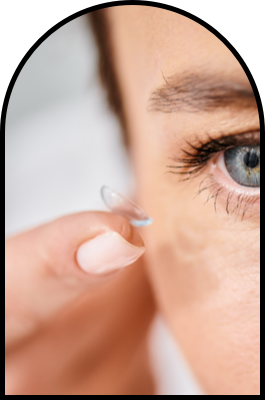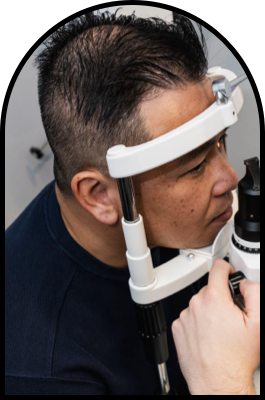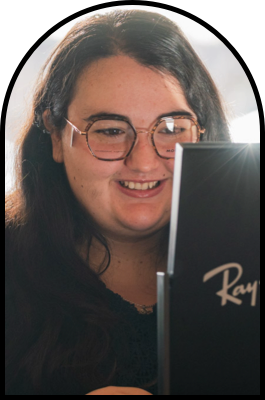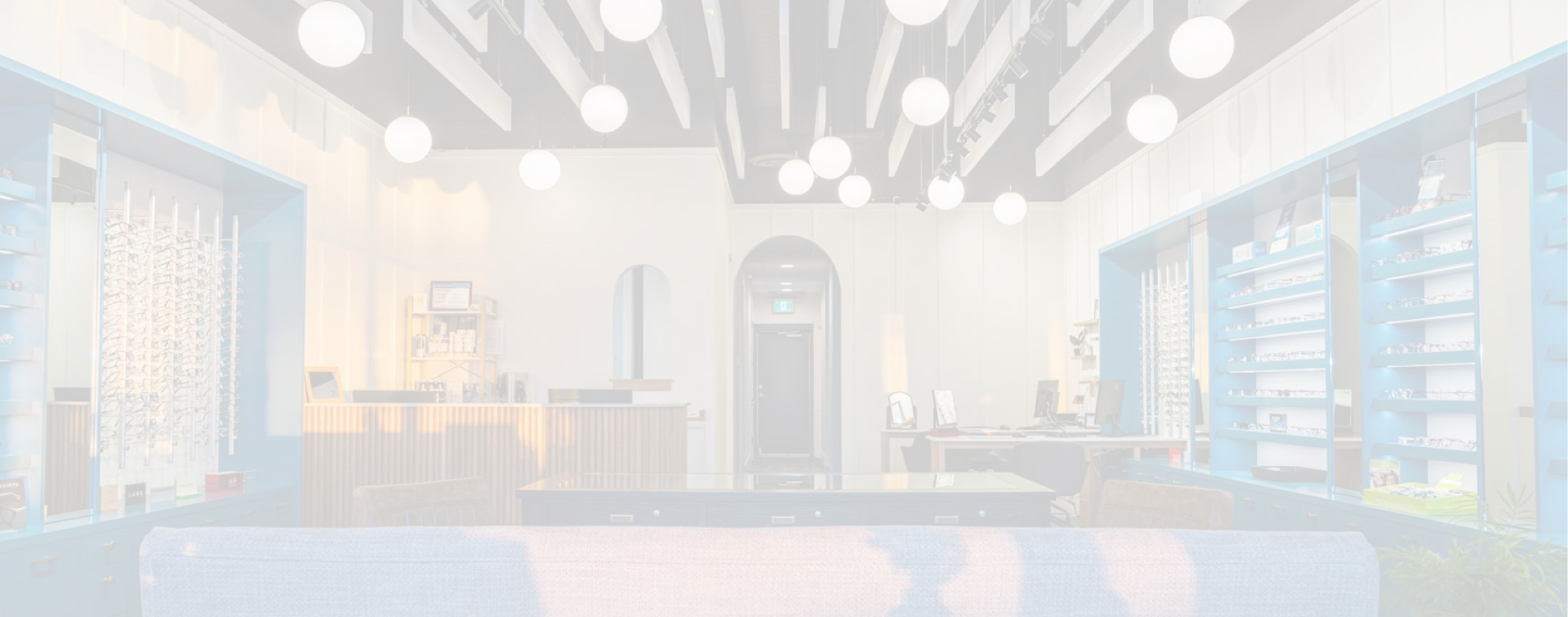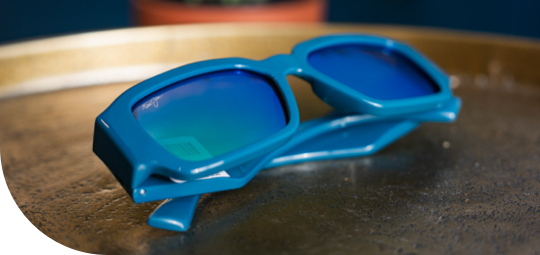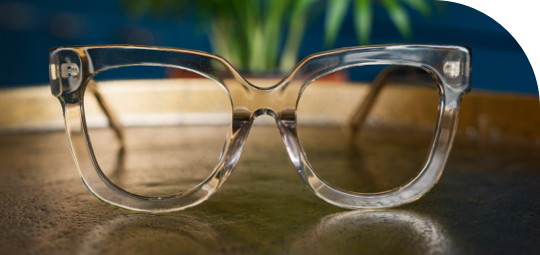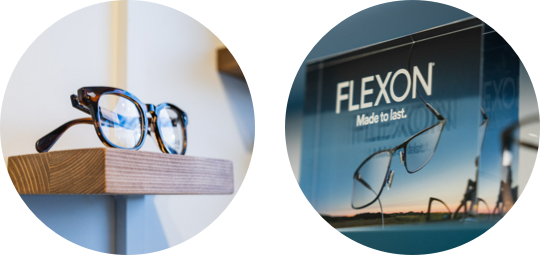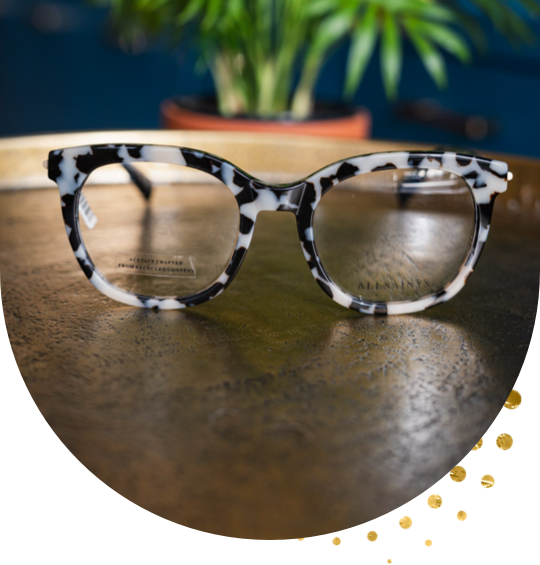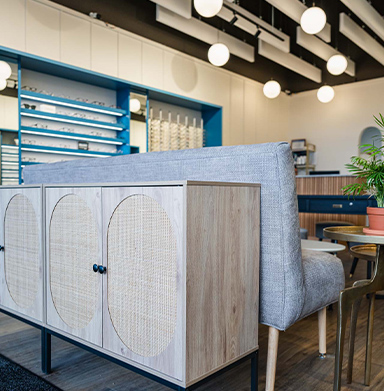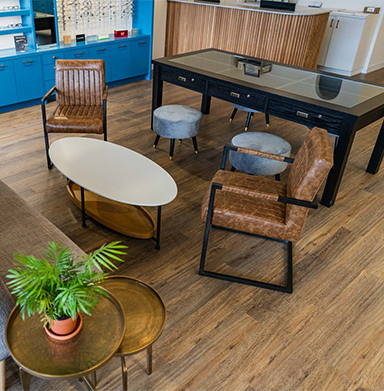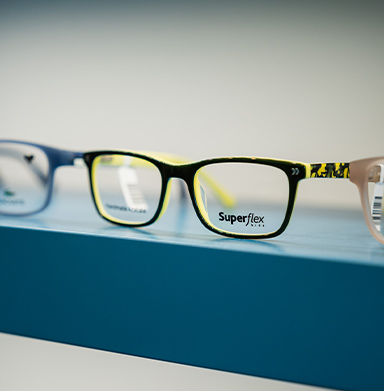The recommended strategy is patience and a few simple habits that help your eyes and brain adapt to the new way of seeing. Progressive lenses offer clear vision at multiple distances without the need for switching between different pairs of glasses, but adjusting can take a little time.
If you’re over 40 and noticing changes in your near and distance vision, progressive lenses can provide a convenient, all-in-one solution. With the right guidance, most people adapt quickly and enjoy improved clarity and comfort in daily life.
What Are Progressive Lenses?
Progressive lenses are a type of multifocal lens designed to correct presbyopia, a common age-related vision condition that reduces your ability to see objects up close. Unlike bifocals or trifocals that have visible lines separating different prescriptions, progressive lenses offer a seamless transition between near, intermediate, and distance vision zones.
For example:
- The top of the lens is designed for distance vision, helping you see objects far away.
- The middle section is tailored for intermediate activities, such as working on a computer.
- The bottom section supports near vision for tasks like reading or looking at your phone.
Progressive lenses are specifically crafted to mimic your eyes’ natural way of focusing, offering a sleek, line-free alternative to traditional multifocal glasses.
Why Adjusting to Progressive Lenses May Take Time?
For many new wearers, the adjustment to progressive lenses comes with a learning curve. Since the prescription strength varies across the lens, finding the correct focus area for each task might feel a bit like training your brain and eyes to work together.
Some sensations new users report include:
- Difficulty determining where to look through the lens.
- Slight distortion or blur at the lens edges.
- Small amounts of dizziness as your eyes adapt to the new lenses.
Thankfully, these issues typically resolve with consistent use and the right guidance.
The Benefits of Progressive Lenses
Before we discuss how to transition smoothly, it’s worth highlighting why progressive lenses are worth the adjustment period.
- All-in-one solution: Forget managing multiple pairs of glasses for reading, computer work, and distance. Progressives provide a clear vision at all distances in a single, convenient pair of glasses.
- Appearance: The lack of visible lines gives progressive lenses a modern, stylish look compared to bifocals or trifocals.
- Natural visual flow: Progressive lenses offer smooth transitions between visual zones, reducing the visual “jumps” seen in traditional multifocal lenses.
- Reduced eye strain: By eliminating the need to constantly switch between glasses, progressives make daily tasks more comfortable.
- Customization options: Today, many progressive lenses are customized for your specific activities, whether it’s driving, using digital devices, or working in an office.
7 Steps to Adjust to Progressive Lenses
If you’ve just purchased your first pair of progressive lenses, follow these steps to adapt quickly and comfortably.
Wear Them Consistently
To help your eyes adjust, wear your progressive lenses as much as possible. Avoid switching back to old glasses, as this can delay the adaptation process and confuse your vision.
Practice Finding the Right Zones
Spend time familiarizing yourself with where each vision zone is located on your lenses. Need to read a book? Look through the lower portion. Driving? Focus on the upper portion. With practice, transitioning between zones will become second nature.
Keep Your Head Movement Smooth
Unlike single-vision glasses, progressive lenses may require slight head adjustments to align your eyes with the appropriate vision zone. Start by turning your head rather than just your eyes when switching focus between distances.

Start with Indoor Activities
Begin using your progressive lenses in controlled environments, such as around the house. Once you feel more comfortable, transition to outdoor activities like driving or walking in busy areas.
Address Peripheral Distortion
Some users may notice a slight distortion at the edges of their lenses. This is completely normal. Over time, your eyes will adapt, and the perception of peripheral distortion will lessen.
Adjust Your Frames for a Perfect Fit
Improperly fitted frames can make adjusting to progressive lenses much harder. Be sure to have your glasses adjusted to sit in the optimal position for your eyes. The skilled optical team at Chestermere Optometry can customize your frame fit to improve comfort and vision clarity.
Stay Patient
It may take some time for your eyes and brain to fully adjust to progressive lenses. Rest assured, most people adapt smoothly with regular use. If adjustments prove challenging, consult with your optometrist to explore further support.
Why Should You Get a Proper Fitting?
Progressive lenses are highly personalized and require expert fitting to function optimally. At Chestermere Optometry, advanced digital measuring tools are used to help achieve precision.
Key metrics considered during your fitting include:
- Pupil distance: Aligning the lenses to the natural spacing of your eyes for proper focus.
- Vertical height: Ensuring the visual zones are correctly positioned relative to your natural gaze.
- Frame fit: Making sure your glasses sit correctly on your face without slipping or discomfort.
With the right fit, your progressive lenses can deliver a more enjoyable vision experience.
Achieve Comfortable Vision with Chestermere Optometry
Progressive lenses are an investment in clear, comfortable vision. While some adjustment is expected, the benefits of wearing progressives far outweigh any initial challenges.
At Chestermere Optometry, our skilled team is dedicated to helping you find lenses that suit your needs. Whether it’s your first pair of progressives or fine-tuning an existing prescription, we are here to guide you every step of the way. If you’re ready to experience the clarity and convenience progressive lenses offer, book an appointment with Chestermere Optometry today.




